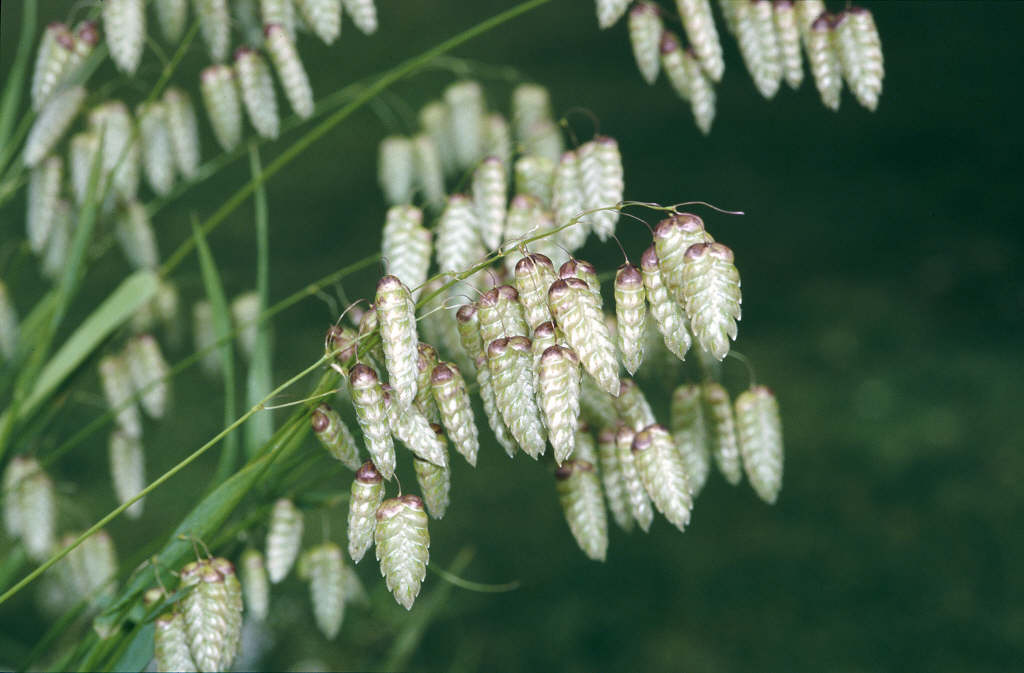Briza maxima
Large Quaking Grass ( Briza maxima)
The Great Quaking Grass ( Briza maxima) is a species of the Gramineae family ( Poaceae ).
Description
The annual plant growth reaches heights of 10 to 60 centimeters. It grows loose horst -shaped. The entire plant is bare. The yellow-green, flat and thin leaves are 3-8 mm wide. They are finely rough around the edges. The ligule ( ligule ) is 2 to 5 millimeters long, the sheaths are smooth.
The red frequently crowded, drooping spikelets appear singly or up to twelfth in loose, slightly branched panicles of 6 to 20 mm long, hair-thin stems. The up to 12 spikelets of the inflorescence are compressed wide heart-shaped to rounded and laterally and are 14-25 mm long. They consist of seven to twenty flowers. The husks have no awns. The lemmas are 6-8 mm long and are seven to eight annoying. The palea are very fine hairs on their keels.
The grass blooms from April to June.
Distribution and location
The plant is common indigenous and widely in the Mediterranean. It was brought in, among others, to the British Isles and Germany. In England it is on dry banks, rocky sites and cultural landscapes in Jersey, Guernsey and the Isles of Scilly is now naturalized. In Germany it is very rare ( not naturalized ) and is only present in scattered ruderal. In their natural range preferred the grass Garigues, pastures, farmland and roadsides.
Use
The Great Quaking Grass is used as an ornamental plant due to its attractive ears, either for use as a green plant or in dry bouquets.







